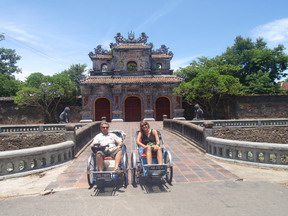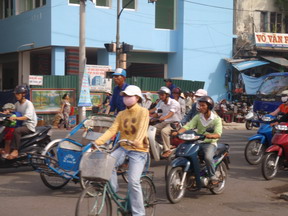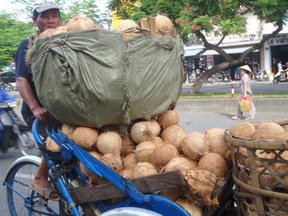Hue 27 - 29 July 2008
Hue in the centre of Vietnam is a city with a huge amount of historical significance. We’re lucky to still have any of the historical buildings as having survived the war where the city was a big centre of hostilities and took a real pounding they were seen by the new rulers as being non PC reflecting as they did the feudal rule and were not maintained. Thankfully in the 1990s the importance of the sites for tourism was recognized and in 1993 UNESCO designated the monuments a world heritage site and much restoration work continues.
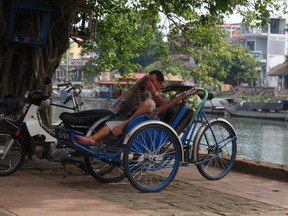
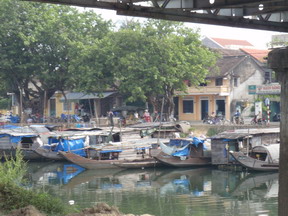
The city is very attractive with French style tree lined streets and set upon the wide Perfume River. We headed down to the river to try and escape some of the heat and ended up joining 3 Dutch ladies on a tour by boat with stop offs at some points of interest. The boats are like dragon boats and are also home to the drivers and their families who live in the front cabins. It was lovely and relaxing out on the river floating past people fishing and water buffaloes and cattle grazing on the banks.
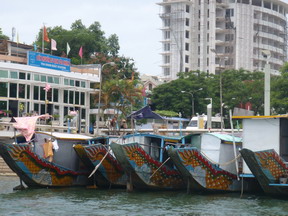

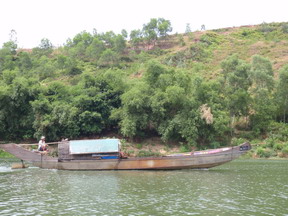
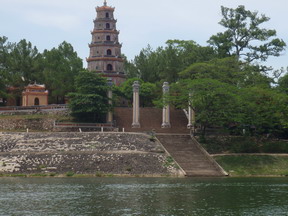
We stopped first at the Royal Tombs where we clambered up the bank to be met by motorbikes and (after negotiating the rate down to something realistic!) we set off. The Tomb of Emperor Tu Duc was pretty impressive. A member of the Nguyen dynasty he ruled between 1848 and 1867 and built this amazing complex here where he both lived and ultimately was buried. Tu Duc lived a life of amazing luxury and had 104 wives and as many concubines though not one child was ever born to him! The site is an immense complex of buildings set amongst lotus ponds and frangipani trees. Due to the fear of grave robbers the actual site at which the Emperor was buried remains secret in fact every one of the 200 or so servants who buried the King was beheaded to ensure it remained so!!
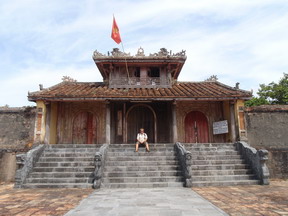
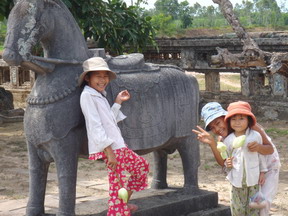
We visited 3 similar tombs all very elaborate in design. Unfortunately a lot of damage was suffered in the war and many of the precious ornaments have disappeared.
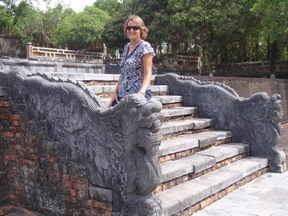

We headed back to the boat stopping next to see the Thien Mu Pagoda. Set on a hill overlooking the Perfume River the pagoda was built in 1601 though it has been destroyed and rebuilt many times. There are many Buddha statues and an enormous bell which supposedly can be heard 10km away. We also visited Dien De National pagoda a big centre of Buddhist anti war feeling which was raided in 1966 by the South Vietnamese government who arrested many monks.

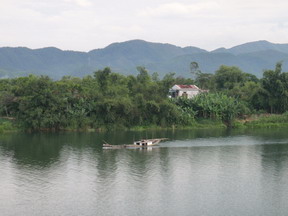
After getting off the boat we spent a pleasant evening wandering around the streets of Hue. It is a very well set out city and one of the main culinary centres of the country apparently we have the Emperor Tu Duc to thank for this as he was extremely demanding in what he ate, we had a Hue style imperial meal of a few courses all beautifully presented and it was delicious. They also have 2 local beers here Huda and Biere larue and very good they were too!! We went for a stroll along the river where there is a night market with the bridge as a gorgeous back drop being lit with ever changing colours.

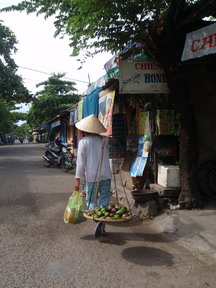
We seem to be doing more shopping in Vietnam than elsewhere being charmed out of our money! The lovely little girl in the picture was selling hand made rice paper cards in order to raise money for her younger brother to go to school. She had never been to school but spoke very good English and French. No wonder Vietnamese immigrants to Australia do so well, they are such hard working people and so bright given even the smallest opportunities they flourish.


An ever present feature in Hue are the Cyclo drivers who are everywhere touting for business, and the next morning we took a tour around town taking in a few more Pagodas (sorry not sure which are which ..they all start to merge after a while!) and seeing street life all around us.
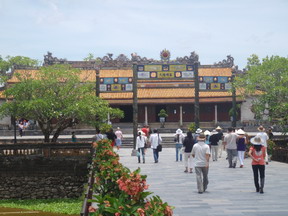

We stopped off to see the Citadel. An impressive structure with a 10km perimeter and a moat all around it, the citadel was originally constructed in the early 19th century. It was a focus for hostility in the war being at one point occupied by the VC and then recaptured by the Americans with the VC outside and the gunfire damage is clearly evident.
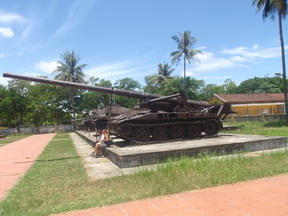
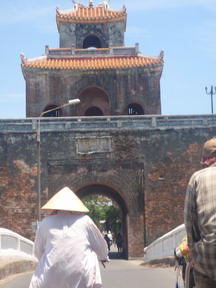
We also went to the Military museum which was shut but we got to see a lot of the American and VC weapons. In markets all over the city there is big business selling war memorabilia hundreds of medals and USA soldiers’ dog tags ..not sure if the latter can be genuine.


We next saw the Imperial enclosure. This citadel within a citadel has 4 equally impressive gates. This imposing building was occupied by the emperors until 1945 when the end of the line Emperor Bao Dai abdicated to Uncle Ho! Much of the buildings within including the Forbidden Purple City (home of the wives and concubines and the only servants allowed in were Eunuchs) were totally destroyed in the war. They are now starting to rebuild. There was an exhibition of old photographs which were fascinating. The Emperor certainly had a privileged existence and even the elephants (forebears of the one in our picture!) had to be taught to kneel and bow down to him and one of the pictures showed 20 of them doing just that!
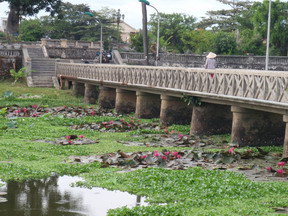

For our last afternoon in Hue we hired a couple of bikes with guides and went out across the rice paddies to the Thanh Toan bridge. About 7km out of Hue this is a lovely Japanese style covered footbridge. It was built with funds from the Japanese wife of a local dignitary to save the people from walking a long way around (or getting wet I presume!) after a hard day in the fields. There was also a farming museum with the best guide ever! The little old lady with blackened stubs of teeth due to a lifetime of beetle nut chewing showed us how everything worked without a word of English working up quite a sweat in the process!!

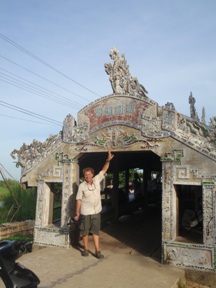
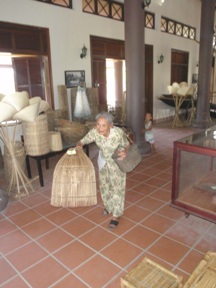

Hue was a really interesting city but with a lot of ground still to cover we took the bus (mercifully only a couple of hours so not a sleeper!) that afternoon to the coastal town of Hoi An.
